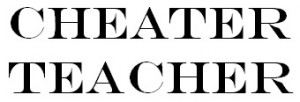 The New York Times has published an op-ed column titled “How I helped teachers cheat.” It was written by Dave Tomar, a self-professed “academic ghostwriter,” whose job was to work for an online custom paper mill. Students would contact the website with an assignment, and they would receive a response with a price to complete the paper. Mr. Tomar was one of the “ghostwriters” who wrote the papers.
The New York Times has published an op-ed column titled “How I helped teachers cheat.” It was written by Dave Tomar, a self-professed “academic ghostwriter,” whose job was to work for an online custom paper mill. Students would contact the website with an assignment, and they would receive a response with a price to complete the paper. Mr. Tomar was one of the “ghostwriters” who wrote the papers.
This was not my first knowledge of the author. Three years ago he wrote an essay in The Chronicle of Higher Education, where he talked about his work. First published under a pseudonym, the essay generated an immense amount of discussion (the online version has 640 posted comments). A little less than a year later, the author voluntarily outed himself in the Chronicle in advance of a book he had written on his exploits under his (presumably) real name.
As the title of the Times op-ed implies, Mr. Tomar takes aim at teachers and teacher candidates. The column describes some of the teacher candidates for whom he wrote everything from lesson plans to individualized education plans. He uses these examples to justify his “complete lack of surprise every time a newspaper headline reports another teacher cheating scandal.”
There is no doubt that teacher cheating scandals, generally around standardized tests, have been in the news; I wrote about them in a blog post a year ago As I said in that post, there is no excuse for that kind of behavior on the part of teachers and administrators. And anyone caught engaging in such actions should be punished, including being prosecuted if appropriate (as is happening in Atlanta). What is not clear, however, is why Mr. Tomar singled out teachers and teacher candidates for his column, and more importantly, why The New York Times chose to run it.
I’m sure that the hundreds or thousands of papers Mr. Tomar wrote (his Chronicle of Higher Education column noted that he’d generally have 20 in progress at one time, and he did this work for six years) were done so for students across a wide variety of disciplines. So why single out teacher education students? He could just as easily have provided a few examples of business students, and then linked those to stories about corporate executives who were arrested for some form of cheating, whether it be insider trading, fraud, or embezzlement. Or he could have described the law students he wrote for, and connected them to lawyers who later got in trouble for stealing from their clients. What about criminal justice students, who later became the cops who lied on the witness stand to get a conviction or stole things from people? The point is that he could have written about students in any discipline and the occupation they were preparing for, and provided examples of malfeasance in that profession.
We should not lose sight of the fact that Mr. Tomar is as much at fault as the students for whom he wrote papers. He calls himself a “ghostwriter,” but he is as much of a cheater as his customers. He aided and abetted their cheating, and did so for personal gain. Why he chose to single out teachers and teacher education students is beyond me. But to give him the platform of The New York Times editorial pages to do so is just plain mean-spirited and unfair.